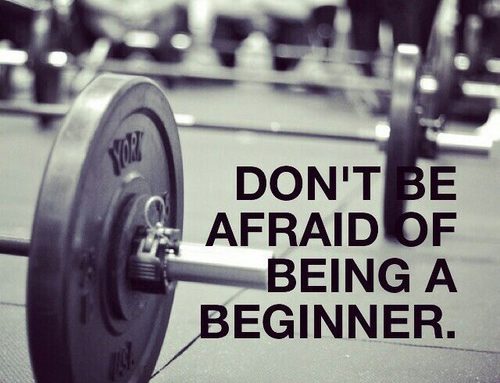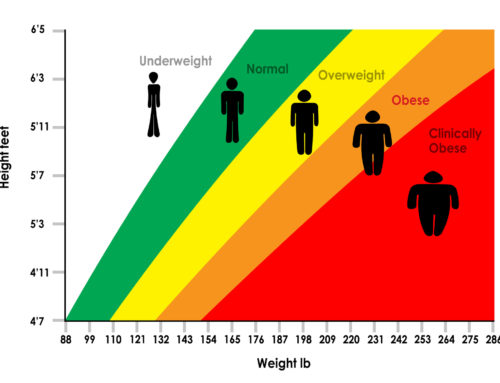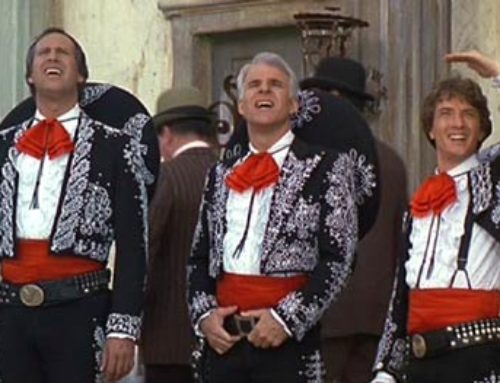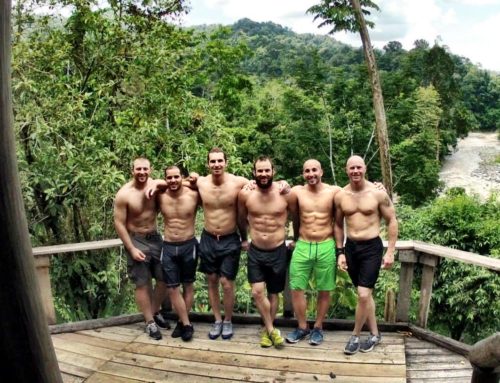Optimum Training of the Masters Athlete
All athletes should train with awareness toward sustainability, but the nature of human growth and development is that in our youth we generally lack the balance needed to have a sustainable perspective. Yes, youth is a wonderful stage in life, but it does come with its own inequities.
Any fitness program designed to meet the needs of any athlete should focus on sustainable gains and health with the future in mind. This balance can be disrupted by the human desire to achieve and strive toward elite excellence in performance or extremes of human capacity. Balance of the more mature athlete is generally easier to attain because of life experience and perspective. With younger athletes, balance is hard to come by and requires more maturity.
The masters athlete class in most sports starts around 30. In CrossFit, the masters classes start at 40. I work with masters athletes at all different levels, fitness/recreational, competitive and elite. It is important for older athletes entering the world of CrossFit to have guidance and perspective on what their goals are, where they are in their fitness development and what is their overall potential. In our box communities (we have 3 CrossFit affiliates), the majority of our masters athletes might be categorized as fitness/recreational, competitive, and there are a handful of more elite athletes.
It’s safe to say that many of these athletes don’t possess enough self-awareness and knowledge to know when their fitness interventions are producing the right results. They generally know when things are not going well, but they lack the ability or skills to change direction. So, sometimes they just disappear and go back to a passive style of “workout” or they continue forward in pain with poor results, which is not sustainable. If they started Crossfit with a lower fitness level, they see huge gains at first. They can’t believe how fit they feel, but then the problems start. They develop enough fitness level and capacity to be dangerous. The high reps, heavy loads and lack of rest adds up.
Waking up in the morning feeling like you were run over by a Mac truck the night before eventually gets old. At some point, you begin to ask yourself, “what the hell am I doing?” You go to the box the next day and all the younger athletes are talking about how their ready to go, and you’re still having trouble warming up. Do that for long enough duration and you get discouraged. The body knows when things aren’t going well and eventually the “itis” impairs not only performance but daily life.
The challenge with Crossfit, which is different than traditional style training environments, is that athletes of all age ranges train or “compete” aside one another in a class. This can be one of the environmental strengths of Crossfit, but if not governed by a good coach or athlete that knows how to train, the dosage and intervention may be to much for the older athlete. Generally, if you can do it, coaches will let you. This can lead to broken, beaten, and scared athletes. They want to figure out how to “fix” their problem, but the answer is hidden in their lack of direction, focus, awareness and perspective. Masters athletes can use the following 10 principles to create sustainability in their fitness investment.
10 Steps for Masters Athletes
1. Find a coach/trainer who wants to train masters athletes and has experience – Show me a coach who is good at what they do, and I will look for tenure in their athletic population.
2. Get involved in a community of “like minded” athletes – It may be a community of similar aged athletes or they may be younger. No matter, be like minded.
3. Decide on your goals and prioritize-Don’t take a shotgun approach
4. Measure your abilities and know your strengths and weaknesses –Accept the fact that you are an older machine, not necessarily less capable but older.
5. Develop a plan with short term and long term goals – Start with 1 month, 3 month, 6 month, 1 year goals. Then develop an over reaching sustainable fitness/lifestyle goal.
6. Have a method to measure your progress-Standards, metrics and use science when available.
7. Be aware when your program is not meeting your goals- Face the music when needed. Change direction, get outside advice and make adjustments where needed.
8. Recognize when injury or pain is not promoting your goals- Find a good quality, open minded clinical resource, doctor, DPT, etc…
9. Develop a sense of physical awareness –separate good from bad
10. Have fun and let your fitness enrich your lifestyle- Most importantly our fitness should impact our life in a big way! Not a bad way!
If it’s broke, fix it! Working out is not training…
Coach D





Love the blog. That said, the “find a coach” part is hard. I’m not leaving my box, love them too much.
Do love my coach, but he is 27 years old and coaches as a 27 year old. Very knowledgeable on all aspects of fitness, nutrition, lifting, Crossfit, etc, but not sure how focused he is on how the workouts affect masters athletes with regards to recovery and progress.
I typically do 5-6 WOD’s per week, plus lifting on 3 of those days. Really takes me a long time to warm up before a WOD.
Self-awareness not a strength and planning my own program not something I feel qualified to do.
Ideas for improving what I have?
Our masters (40+) community is actually as big as the young folks – probably because our box owner is a Master Competitor (top 50) himself. We have a couple of masters sayings at our place.
1 – Masters Athletes – Old, Slow, and inflexible … but we last a LONG time!
2 – Plenty of Warmup is ESSENTIAL. It’s the OGIPP – Old Guy Injury Prevention Program.
Agreed!
That means doing some of that mobility stuff, when we don’t want to, right. Keep up the good work. Great you have a solid environment.
I have found that in general, and this is a generalization, that the young coach is making training recommendations in a vacuum. Only experience can bring what experience brings, if that makes sense. When you have a good head on your shoulders, train others, train your self, learn and develop self awareness, your experience tells you what feels right and wrong when it comes to training. No matter what the world of fitness tells us, human biology has not changed that much in the last thousand years. Aging is inevitable, but aging with capacity and quality of life is sustainable.
I approach it from a three pronged viewpoint; research, my experience, and the experience from the client/athlete. This is also the same way I practice. It works!
Best regards
Steve,
I can feel your frustration.
Here’s a little advice from a 48, 5’8″, 180. BS 415, OHP 205, DL 505, Fran 3:56. CrossFit experience over 5 years and I compete in both Powerlifting and USAW. I’m also a physician that treats athletes, if that sort of thing matters to you.
1) 5-6 WODs plus supplemental lifting is… well… a lot.
2) You will have to develop self-awareness or you won’t be around long. Here’s the deal, I’ve been coached by great CF HQ certification staff level coaches, CF games level athletes, down to just took the L1 “days” of experience level coaches. None of them have the practical experience to understand how long it takes Master athletes to recover. That is not to say they are bad coaches, but they have not lived as a Master athlete. They may have book learnin’ but there are things one must learn by living it. Rules of thumb and observation can go a long way, but nothing trumps personal experience. If you happen to be lucky enough to train with a Masters age coach, you are indeed lucky. I’ve been coached by one, I was stronger, he was fitter and he was injured at least as often if not more than I was, it was awesome. I hated leaving that gym. But, life moves on.
3) I train with a Strength bias, so here is a general formula. For strength work: a “light” week, a “heavy” week followed by a deload week works pretty well for me.
4) You must learn to WOD by feel. If you are feeling beat up, then scale everything. Go at a pace that keeps you moving but doesn’t gas you out. Let the coach know what is going on beforehand so they do not feel the need to “motivate you”. Yes… this feels like sandbagging. You will have to get over it.
5) Don’t compete with 20-somethings often. I know how good it feels to hand a talented young buck his ass in a WOD. Or, to overhead press weights others are struggling to squat. But, it is not sustainable. I can not even recall all the overuse injuries, sprains, strains, contusions, muscle tears, abrasions, lacerations and even a fracture that I’ve suffered being a dumbass competing against someone 20+ years my junior. Don’t do this. (As least… not often.)
6) You have to plan your warm ups. There is no way I can show up to the gym 5 min before a class and be warmed up when everyone else is raring to go. It takes me about 30 min to get safely warmed up for the typical CF WOD. That gives you a rough idea of how long it may take. All the KStar mobility stuff that seems like just a bunch of glorified farting about with bands while rolling around on the floor actually works. If your shoulder mobility sucks, do something about it. It takes a long time to improve, and you will stiffen up quickly when you quit. Make it a priority.
Hope that helps.
verrrrrrry insightful & intelligent advice here……
Steve, great response from Patrick and agree 100%.
The key to training for longevity, sustainability and performance is developing a solid knowledge base, experience and high level of intuitive awareness as to what is appropriate for you. At some point, you may have to break away from what the “box” is doing and develop a program that better matches your needs. Not to say you can’t do box WOD’s etc…, but the majority of your training should be goal directed with linear progression and not random.
Some boxes have what Patrick is referencing, many don’t. Some box owners/coaches believe, well I’m not sure what they believe when you look at their programming. It’s random, disorganized, non-progressional, and lacks thought.
So again, step 1, find a good coach and box with solid programming and grow your own knowledge base to develop a firm foundation.
I also have been treating patients and training athletes for 25 years, and the patients/athletes who “learn” and develop a sense of self awareness and governance, do the best. Strength biased programming with undulation(2-3 week cycles of load progression followed by a rest or tapering week then re-assess) and conditioning to match supporting and improving your weaknesses is what I would recommend. I would also agree with Patrick that 5-6 WOD’s done in the conventional, “thrash and trash” CF dogma is to much. At most, based on your fitness level and desired outcome, 3-4 HIIT sessions per week with strength training mixed in is more appropriate.
Also, again like Patrick said, work mobility along with that strength. If you cannot mechanically get into the position to allow optimum joint or lever function, what use is being strong. Strength and mobility must co-exist at similar levels to eventually develop a balance. K-star’s stuff is good, but it can be a lot to digest. Use it, but focus on 1-2 areas and keep it simple and do it for weeks before you expect sustained results.
Most importantly, listen to how you “feel” and educate yourself as to what is appropriate. The older we get, the more quality of life and then capacity has to be the driving force for our training. Again, sustainability.
In April, we will have our first Masters Training Series Seminar that will address all these areas at a basic level to start and with some customization. Be looking for the post with the registration link!
Best regards,
Working out is not goal oriented, training is…
Wow. What other community would give these awesome responses to my issues? Thanks, and thanks again!
Patrick, great points. I am discovering the truth in your points as I gather CF experience. (BTW, 47, 5′ 11″, 185, 6:40 Fran, 215 C&J, 405 DL, 165 Snatch)
Other than this blog (which I love), is there a Masters Forum anywhere for daily/weekly chit chat and advice?
If not, there should be.
One year ago, I was 35 pounds heavier, did exactly zero strict pull-ups and deadlifted 185. I love my new self and want to keep improving, but need to do it without injury.
As you know, extended time away deteriorates us masters faster than the young guys.
Thanks again for sharing your wisdom.
Love this. Responses are great too. As a 62 f who has been crossfitting for over two years this rings so true. My coach is great but I have to fight the feeling that I am :sandbagging particularly when I don’t RX which is stupid. I am learning to listen more to my body than my ego but my ego is louder!! Great advice.
Smart Move Pat! Don’t stop giving it your all, just determine which day you want to do it on!
Coach D
Just stumbled onto this site, googling around for information about Crossfit for seniors. Thanks for putting it together.
I started doing Crossfit 5 years ago, when I was 58, and I’m now nearly 64. I think I’ve had good coaching all the way along. I have been the oldest athlete at my box the entire time. Why do I do it? Three whiteboard words; “Delay the decay”. I’ve always enjoyed a very active outdoor life; skiing, hiking, backpacking, river running, cycling, climbing. When I started Crossfit, my training goal was to try to ensure that I would be able to continue to enjoy these activities at a high level for as many years as possible. I’m still enjoying all those activities today, and as a bonus, I’ve made a whole new set of Crossfit friends.
As a senior Crossfitter, I have learned a number of lessons along the way, usually the hard way.
1. Rule number 1; don’t get injured. No improvement in the box is worth the weeks and months of recovery that even a minor injury can cause.
2. The “leave your ego at the door” is critical guidance for seniors, because even a minor failure here will result in violating Rule No. 1. This takes practice. One sign of a good coach is being able to recognize a violation in progress, and to intervene early enough to prevent the injury. I started out thinking that I ought to be able to use the woman’s recommended weight. After learning the hard way (more than once), I don’t worry about that anymore.
3. Never “work though the pain”. By pain, I mean something like that sharp pain you feel in your lower back when attempting a DL with too much weight on the bar, or the elbow pain that just seems to be getting worse each time you do a wall ball. By staying the course, you can pretty much guarantee a violation of Rule No. 1. Not the same thing as working at high intensity.
So if you want to keep doing the things you really enjoy doing, and make a whole new community of friends (almost all younger than you), give it a try.